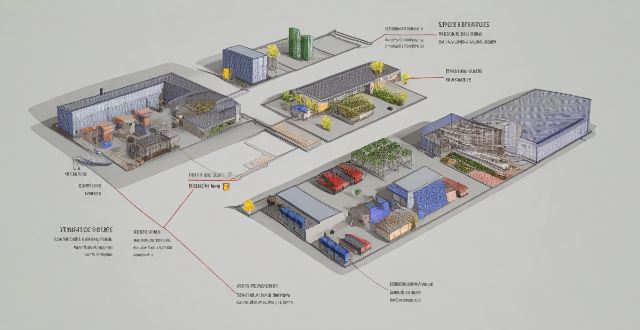Carbon capture and storage (CCS) has the potential to mitigate climate change by capturing CO2 emissions from power plants and industrial processes, preventing them from entering the atmosphere. The captured CO2 can be transported to a suitable location for long-term storage or used for enhanced oil recovery. However, CCS technology faces challenges such as high costs, energy losses, and public acceptance issues. While it is not a silver bullet, CCS could play a valuable role in reducing greenhouse gas emissions when integrated with renewable energy strategies and energy efficiency measures.

Can Carbon Capture Help Us Achieve Our Climate Goals?
Carbon capture and storage (CCS) is a technology that captures carbon dioxide emissions from power plants and industrial processes, preventing them from entering the atmosphere. The captured CO2 is then transported to a suitable location for long-term storage, such as depleted oil or gas reservoirs, deep saline formations, or even used for enhanced oil recovery. But can this technology help us achieve our climate goals? Let's explore this question in detail.
The Role of Carbon Capture in Mitigating Climate Change
*Direct Emission Reduction*
- Point Source Control: CCS offers a solution for point sources like power plants, reducing their direct CO2 emissions significantly.
- Industrial Processes: For industries where emission reduction through other means is challenging, CCS can play a crucial role.
*Supporting Renewable Energy Transition*
- Bridge Technology: As renewable energy sources are scaled up, CCS can act as a bridge by capturing emissions from still necessary fossil fuel operations.
- Negative Emission Technologies: When paired with bioenergy, CCS can create negative emissions, effectively removing CO2 from the atmosphere.
*Enhancing Circular Economy*
- Resource Recovery: Some CCS technologies allow for the capture of CO2 which can be used in the production of chemicals, fuels, and materials.
- Waste Management: By capturing CO2 from waste processing facilities, CCS can reduce the environmental impact of waste management practices.
*Facilitating Cleaner Use of Fossil Fuels*
- Enhanced Oil Recovery (EOR): Injecting CO2 into oil fields not only stores the gas but also helps recover more oil, albeit with environmental trade-offs.
- Cleaner Coal Technology: Advanced coal technologies like Integrated Gasification Combined Cycle (IGCC) can incorporate CCS, reducing coal's carbon footprint.
Challenges and Considerations
*Technical Hurdles*
- Efficiency Losses: Current CCS technology often results in energy losses, requiring additional fuel and thus offsetting some emission savings.
- Storage Security: Ensuring the long-term containment of CO2 is crucial; leakage could negate the benefits of capture.
*Economic Barriers*
- High Costs: The expense of building CCS infrastructure is high, making it difficult to compete with conventional power generation methods.
- Financing Challenges: Without sufficient financial incentives, it's hard to attract investment in CCS projects.
*Scale and Deployment Issues*
- Limited Scale: The current capacity for CCS globally is minuscule compared to the scale needed to make a significant impact on climate goals.
- Public Acceptance: There may be local opposition to CCS projects due to concerns over safety, environmental impact, or perceived economic effects.
Conclusion
While carbon capture and storage has the potential to be an important tool in our efforts to combat climate change, it is not a silver bullet. It faces significant technical, economic, and social challenges that must be addressed before it can contribute substantially to achieving global climate goals. However, when integrated with renewable energy strategies and energy efficiency measures, CCS could play a valuable role in reducing greenhouse gas emissions and buy time as we transition to a less carbon-intensive world.